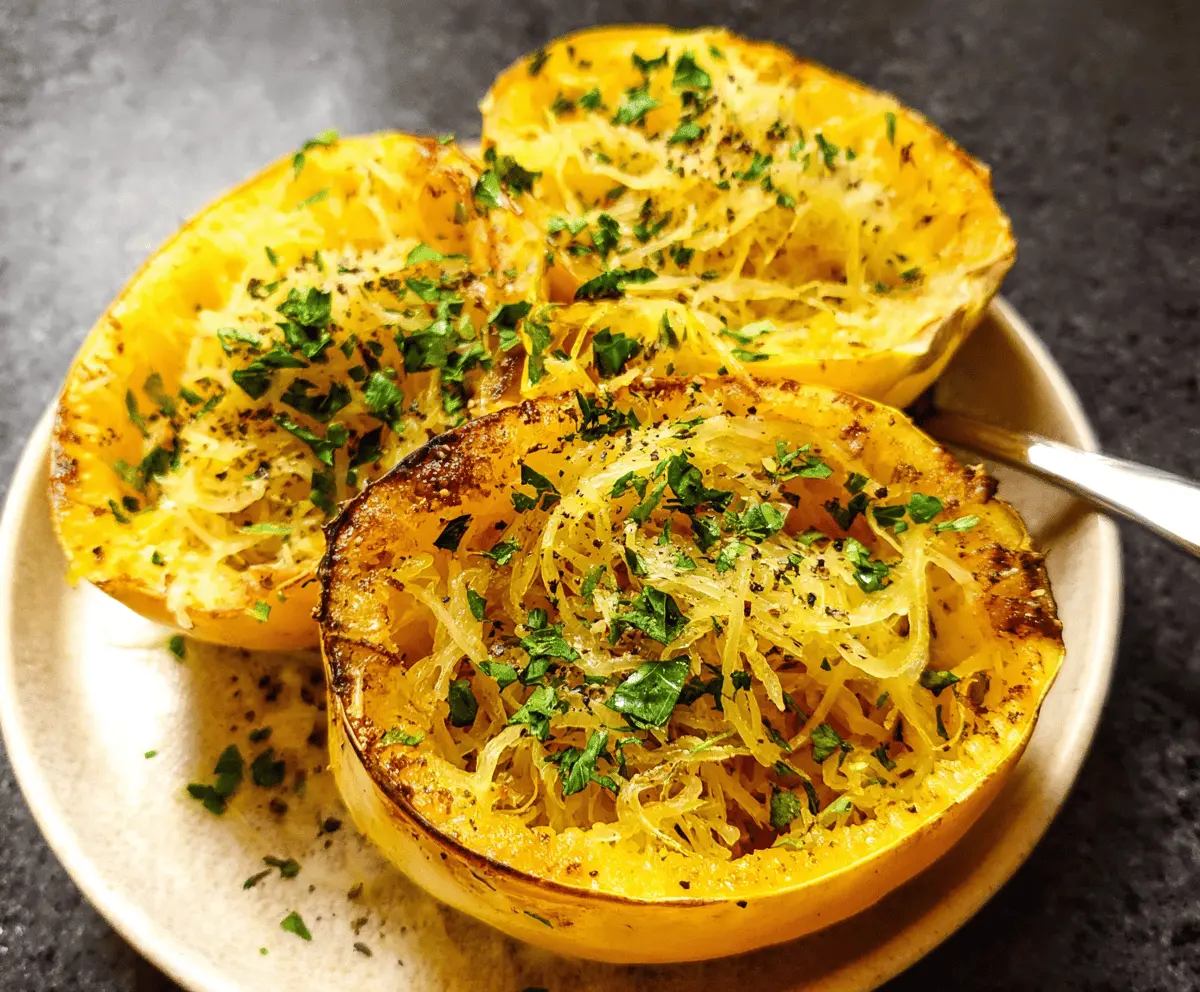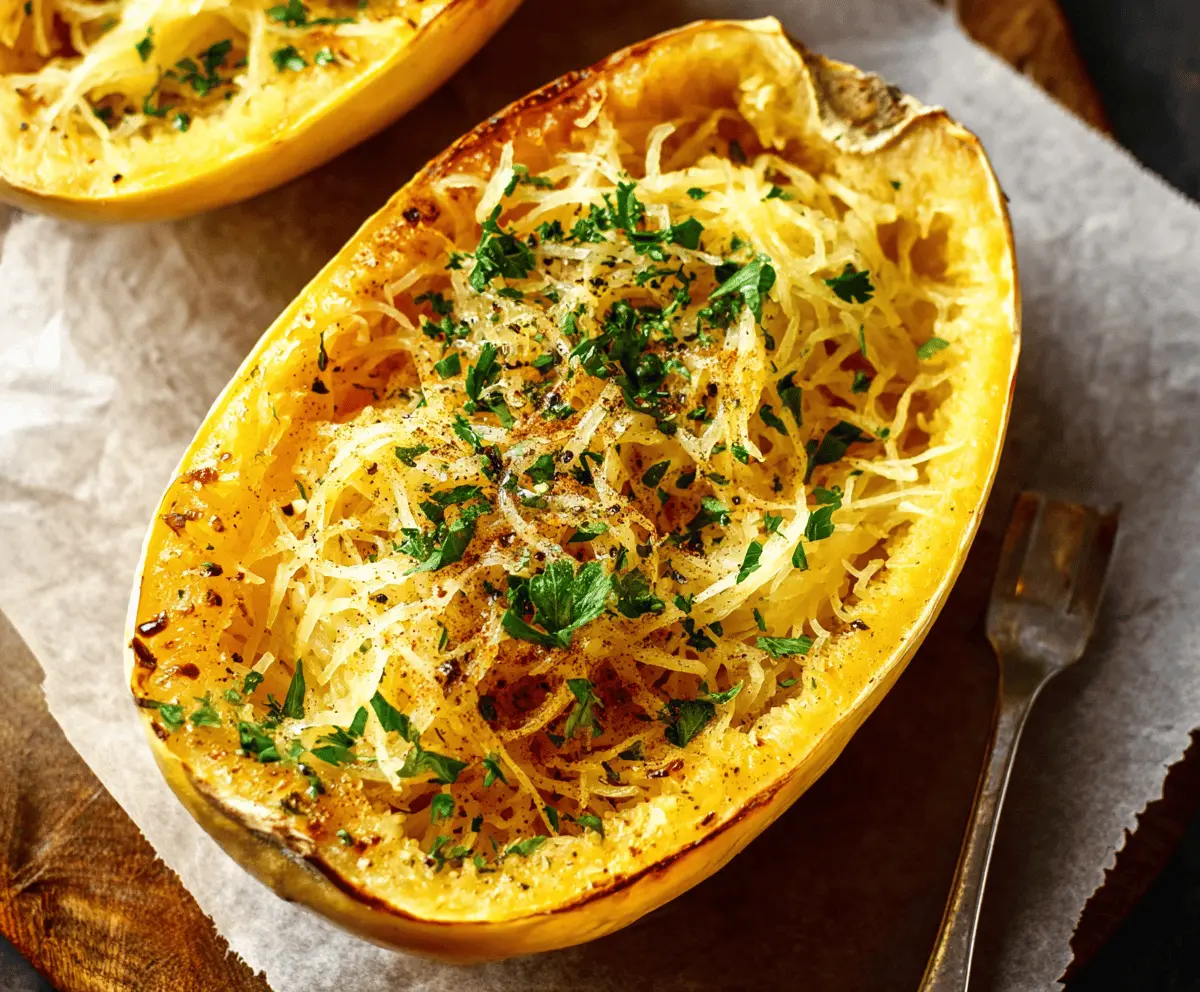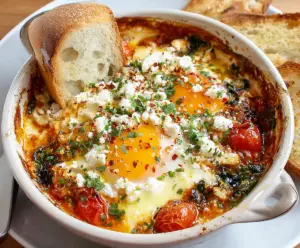The best spaghetti squash you’ve ever tasted is a simple dish that brings a fresh twist to your usual weeknight dinner. With its naturally sweet and slightly nutty flavor, spaghetti squash creates these fun, noodle-like strands that soak up any sauce you pair it with. It’s light but satisfying, and a great way to enjoy a veggie-packed meal that feels special without a lot of fuss.
I love making this dish when I want something comforting but don’t feel like dealing with traditional pasta. The squash becomes tender but keeps just the right bit of bite, and it pairs beautifully with garlic, herbs, and a drizzle of olive oil or a sprinkle of Parmesan. I find that roasting the squash first brings out its flavor better than boiling, and it makes the noodles easy to separate with a fork.
One of my favorite ways to serve this spaghetti squash is topped with a warm, homemade tomato sauce and fresh basil. It’s perfect for cozy dinners at home or even as a healthy side for guests. The best part is how it feels like a treat while still being really good for you. I promise, once you try it this way, spaghetti squash will have a permanent spot on your menu!
Key Ingredients & Substitutions
Spaghetti Squash: This squash is the star of the dish. Look for one that’s firm and heavy for its size. If you can’t find it, butternut squash can work in a pinch, though the texture will be less stringy.
Olive Oil: Olive oil adds a nice richness and helps with roasting. You can use avocado oil or melted butter instead for a different flavor profile.
Garlic Powder: Garlic powder gives a gentle, even garlic flavor without burning. Fresh garlic can be used, but add it after roasting or it might burn in the oven.
Parmesan Cheese: Parmesan adds a salty, nutty finish. If you’re dairy-free, try a sprinkle of nutritional yeast for a similar cheesy taste.
Fresh Parsley: Parsley adds a fresh, bright burst at the end. You can swap with basil or oregano if you want a different herb twist.
How Do You Get Perfectly Tender Spaghetti Squash with Great Texture?
Roasting the squash cut-side down is key for tender, moist noodles. Here’s how to do it:
- Preheat your oven well to 400°F (200°C) for even cooking.
- Slice the squash lengthwise carefully—it’s firm, so using a sharp knife helps.
- Remove the seeds completely for a cleaner texture.
- Brush the cut sides with oil and season well before roasting. Roasting cut-side down traps steam, softening the squash evenly.
- Roast for 40-50 minutes and check doneness by piercing with a fork; it should be tender but not mushy.
- Once cool enough, use a fork to gently scrape the flesh into strands—don’t press too hard or the noodles may break.
This method helps keep your squash flavorful while achieving that perfect spaghetti noodle feel. It’s simple but makes a big difference in taste and texture!

Equipment You’ll Need
- Baking sheet – perfect for roasting the squash evenly and catching any drips.
- Sharp chef’s knife – makes slicing the firm squash easier and safer.
- Spoon – great for scooping out seeds and stringy bits cleanly.
- Fork – ideal for scraping the squash into noodle-like strands without mushing them.
- Mixing bowl – handy to toss the squash strands with seasoning and cheese.
Flavor Variations & Add-Ins
- Add cooked ground turkey or beef for a hearty, protein-rich version.
- Mix in sautéed mushrooms and spinach for extra veggies and earthy flavor.
- Swap Parmesan for a sprinkle of mozzarella or feta to change the cheese vibe.
- Sprinkle red pepper flakes or Italian seasoning to give it a little heat or herb punch.

The Best Spaghetti Squash You’ve Ever Tasted
Ingredients You’ll Need:
- 1 medium spaghetti squash (about 3 pounds)
- 2 tablespoons olive oil
- 1 teaspoon garlic powder
- Salt, to taste
- Freshly ground black pepper, to taste
- ¼ cup grated Parmesan cheese
- 2 tablespoons fresh parsley, chopped (for garnish)
How Much Time Will You Need?
This recipe takes about 10 minutes to prepare and around 40-50 minutes to roast the spaghetti squash, making the total time roughly an hour. Let it cool slightly before serving.
Step-by-Step Instructions:
1. Preheat and Prepare:
Start by preheating your oven to 400°F (200°C), and prepare a baking sheet by lining it with parchment paper. This will help with easy cleanup and prevent sticking.
2. Slice and Scoop:
Carefully slice the spaghetti squash in half lengthwise. Use a spoon to scoop out the seeds and stringy parts from the center, making a clean cavity.
3. Season and Roast:
Brush the cut sides generously with olive oil, then sprinkle garlic powder, salt, and freshly ground black pepper over the flesh. Place the squash halves cut-side down on your baking sheet. Roast for 40-50 minutes, or until the flesh is tender and easily pierced with a fork.
4. Create the Noodles:
Remove the squash from the oven and let it cool just enough to handle. Use a fork to scrape the flesh gently; this will create the spaghetti-like strands.
5. Finish and Serve:
Sprinkle the shredded squash with grated Parmesan cheese and toss gently to combine. Add an extra drizzle of olive oil if you like. Transfer the squash back into the shell or onto a serving dish. Garnish with chopped parsley and a bit more freshly ground pepper. Serve warm and enjoy!
Can I use frozen spaghetti squash for this recipe?
It’s best to use fresh spaghetti squash for roasting since frozen squash tends to be mushy when thawed. If you have frozen squash, thaw it completely and pat it dry before cooking, but expect a softer texture.
Can I cook spaghetti squash in the microwave instead of the oven?
Yes! Pierce the squash a few times with a fork, microwave on high for about 10-12 minutes, then let it cool before halving and scraping out the strands. The texture will be softer than roasting but quicker.
How should I store leftover spaghetti squash?
Store leftovers in an airtight container in the refrigerator for up to 4 days. Reheat gently in a skillet or microwave to keep the texture tender without drying out.
What are good toppings to add to roasted spaghetti squash?
This squash pairs well with tomato sauce, sautéed vegetables, cooked meats, fresh herbs, or a sprinkle of cheese like mozzarella or feta for extra flavor.


